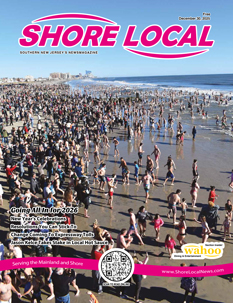By Meteorologist Joe Martucci
Fourth of July’s weekend weather was just what you’d expect for the region: perfect to enjoy our greatest natural resource – the ocean and bays.
The big weather story the past week, and even the week before, was Hurricane Beryl, which rewrote the history books well before it made landfall on the Texas shoreline as a Category 1 hurricane on July 8.
It was the earliest Category 5 Atlantic hurricane on record, which goes back to 1851. Beryl is the easternmost hurricane to form in June. She generated the most accumulated cyclone energy (metric based on storm duration and strength) for any storm before August. Beryl also broke records for intensity this early in the hurricane season.
Beryl is just the start of what is nearly certain to be a very active hurricane season in the Atlantic Hurricane Basin. Forecasts from the National Oceanic and Atmospheric Administration, as well as Colorado State University – the two most trustworthy sources for tropical predictions from my perspective – both released a record high estimate for the number of storms this season would bring. Let’s see what the hurricane forecasts mean for New Jersey.
How Active Will the Season Be?
Hurricane season runs from June 1 to Nov. 30 officially. However, any storm within the January to December calendar year counts for this year.
The climatological average is 14.4 named storms, according to the National Oceanic and Atmospheric Administration. Those include tropical storms (maximum sustained winds of 39 mph or greater) and hurricanes (74 mph or greater). Of those 14.4 named storms, 7.2, or exactly half become hurricanes on average.
Colorado State University is forecasting over 50% more than that, with 23 named storms and 11 becoming hurricanes.
The number of major hurricanes – Category 3, 4 or 5 storms, is forecast at 3.2. Maximum sustained winds must be at least 111 mph in this case. Colorado State forecasts five, and we already had one with Beryl.
Another aspect to look at is the Accumulated Cyclone Energy (ACE). This term has been around, but like ‘polar vortex’ and ‘derecho’ before it, it’s a word that’s become popular in the public recently.
Specifically, we want to look at ACE west of 60 degrees longitude as that takes into account the United States East Coast, Gulf Coast, Central America and the Caribbean. Colorado State forecasts ACE here to be 71% above the average. So, not only are storms expected to be strong, but they’re expected to be close to the coast as well.
The National Hurricane Center paints a similar picture. They forecast an 85% chance of a more-active-than-usual season. There’s just a 5% chance of a below-average season.
What About New Jersey?
We turn to Colorado State University’s forecast for the answer. They actually break down the risk for tropical systems within 50 miles of the shoreline, all across the United States.
In short, the risk is higher. However, it’s still more than likely that the Jersey Shore won’t see a direct strike or very close call from a tropical cyclone. Here are the probabilities of a storm being within 50 miles of New Jersey’s coast.
Tropical storm or hurricane: 35%
Hurricane only: 11%
Major hurricane: 1%
Now, compare that with the average.
Tropical storm or hurricane: 23%
Hurricane only: 7%
Major hurricane: 1%
The risk is higher, without a doubt.
So it’s wise to be on alert, know your evacuation plan and have materials ready in case a storm does strike. However, the threat is still lower than the probability of calling heads or tails on a coin flip.
More than likely we will see remnant storms pass through. While we missed the worst of Ida in 2021 and Ophelia in 2023 in South Jersey, they brought death and devastation to the northern half of the state, as well as New York City. That can certainly happen in our area this year so remain vigilant. And remember, it’s the storm surge, not the wind, that brings the most fatalities.
Fourth of July Weekend Recap
The shore enjoyed a near 100% dry holiday weekend. High temperatures were between 75 and 85 degrees with a mix of sun and clouds. The cooling sea breeze felt delightful most of the time.
The weekend received a B+ in my seventh annual Shore Summer Weekend Weather Report Card. Inland was nearly 100% dry as well.
However, maybe I should say ‘rain free,’ because it didn’t feel dry out there. It felt like South Florida, New Orleans or Houston, take your pick.
The dew point, a measure of moisture in the air, was oppressive at above 75 degrees July 5-7, according to the Office of the New Jersey State Climatologist in Woodbine, Dennis and Egg Harbor Township. At times Saturday and Sunday, it was over 80 degrees. Some people pay hundreds of dollars for the steamy, sauna experience we had for free.
Joe earned his Meteorology Degree from Rutgers University. He is approved by the American Meteorological Society as a Certified Broadcast Meteorologist and Certified Digital Meteorologist, the only one in the state with both. He’s won 10 New Jersey Press Association Awards. You can find him on social media @joemartwx










